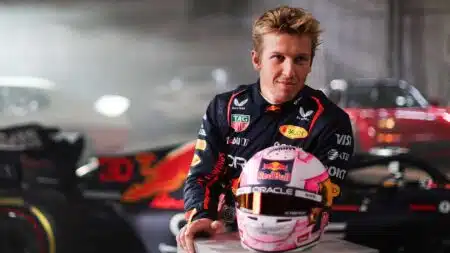
F1 snore-fest shows new cars badly needed: Up/Down Japanese GP
The 2025 Japanese GP showed a much more extreme change than next year's technical regulations is needed to make racing at classic F1 tracks interesting
Just one? That’s a tough call. But to narrow it down, I’d have to go for the closing stages of the Fuji 6 Hours in October.
The new FIA World Endurance Championship really caught my imagination this year, and from what I can gauge the readers of Motor Sport shared my enthusiasm. The return of a proper world championship for sports cars after an absence of 20 years remains, in my view, Jean Todt’s most significant contribution to the sport (so far) since his election as FIA president.
At the start of the year, the impact of Peugeot’s total withdrawal from racing threatened to derail the WEC, as it would become known, before it had even begun. So thank goodness for Toyota. The Japanese giant stepped up its campaign with the new TS030 Hybrid to commit a single entry for every round after Le Mans. Audi desperately needed serious competition, as much as the championship itself, to justify its continued investment in sports car racing. And in Toyota, it found a new and very worthy adversary.
After a dramatic and highly promising race debut at Le Mans, the TS030 Hybrid quickly proved at least a match for Audi’s R18 e-tron quattro on pace, and by the time we got to Fuji the Japanese prototype had already scored a maiden victory, at Interlagos.
Now, at its home circuit, in front of the company’s most important executives, expectations had soared.
Kazuki Nakajima, Alex Wurz and Nicolas Lapierre had already shown that the Toyota had the edge on the two Audis as the six-hour mark approached. But strategy dictated that Nakajima would need a ‘splash ’n dash’ for fuel if he was to secure that prized home win.
Behind him, André Lotterer’s Audi had been delayed by a stop-go penalty for contact with Aston Martin’s lone GTE Vantage. The Le Mans winner deemed the penalty “harsh” (I’d disagree) – but whatever, the damage was done. Now Nakajima needed to eke out a gap of 40 seconds to pit and resume with his lead intact.
He just made it. We were on the edge of our seats as Lotterer charged into the braking area for the Turn 1 hairpin. But the former Williams F1 driver had already re-emerged from the pitlane and was on his way to the apex. Now Lotterer faced a struggle on double-stinted tyres, and in this moment the battle was won.
Darkness had fallen by the time they took to the podium. These were wonderful scenes to witness, as the ever-contagious Japanese enthusiasm for motor sport was given full throttle. On my first trip to a country I’d always wanted to visit, it was a perfect memory to take away.
By the end of the season, Audi had claimed a full house of the constructors’ World Championship, drivers’ titles for Lotterer, Benoît Tréluyer and Marcel Fässler and an 11th victory in 13 years at Le Mans.
But in its first few months of competition, the new Toyota had matched Audi 3-3 in head-to-head meetings, and it’s a rivalry that looks set to explode in 2013. What a shame Peugeot isn’t there to make it a three-way fight. But even so, Silverstone in April can’t come soon enough. As for Le Mans in June, it could be an all-time classic.

The 2025 Japanese GP showed a much more extreme change than next year's technical regulations is needed to make racing at classic F1 tracks interesting

Max Verstappen looks set to be pitched into a hectic, high-stakes battle for F1 victories in 2025, between at least four teams. How will fans react if he resorts to his trademark strongman tactics?

Red Bull has a new team-mate for Max Verstappen in 2025 – punchy F1 firebrand Liam Lawson could finally be the raw racer it needs in the second seat

The 2024 F1 season was one of the wildest every seen, for on-track action and behind-the-scenes intrigue – James Elson predicts how 2025 could go even further